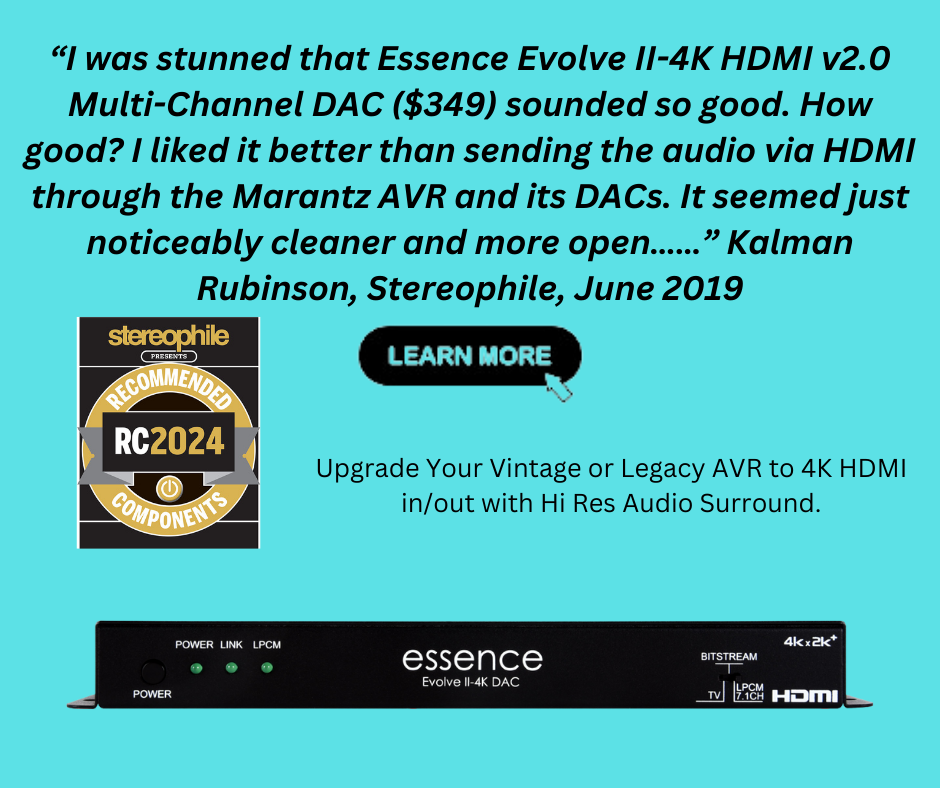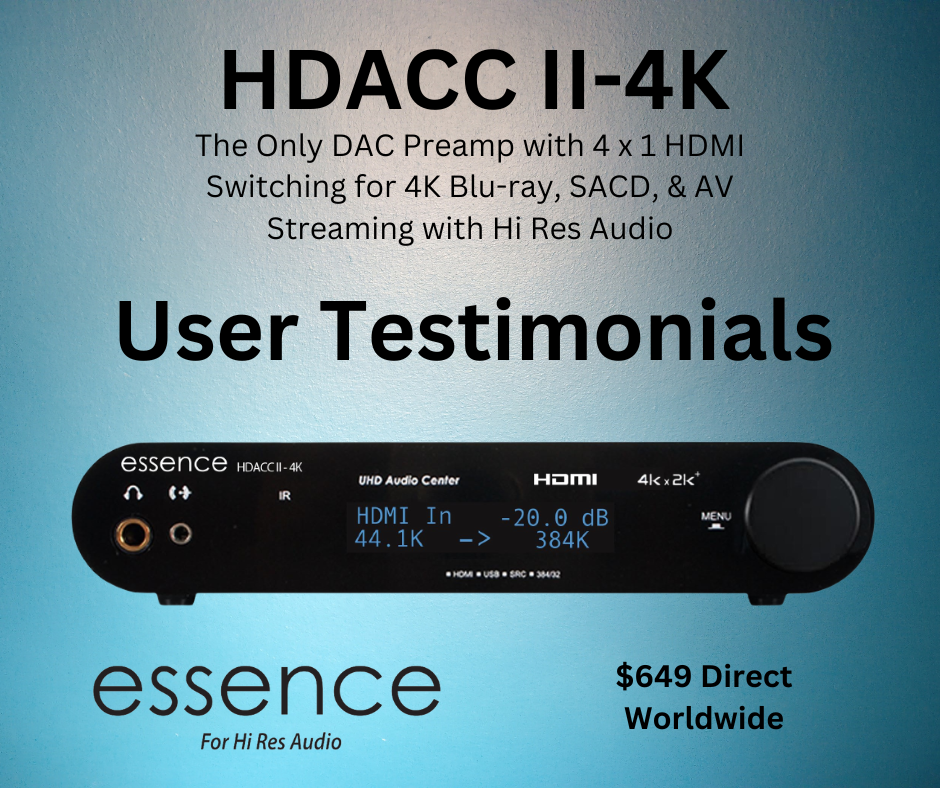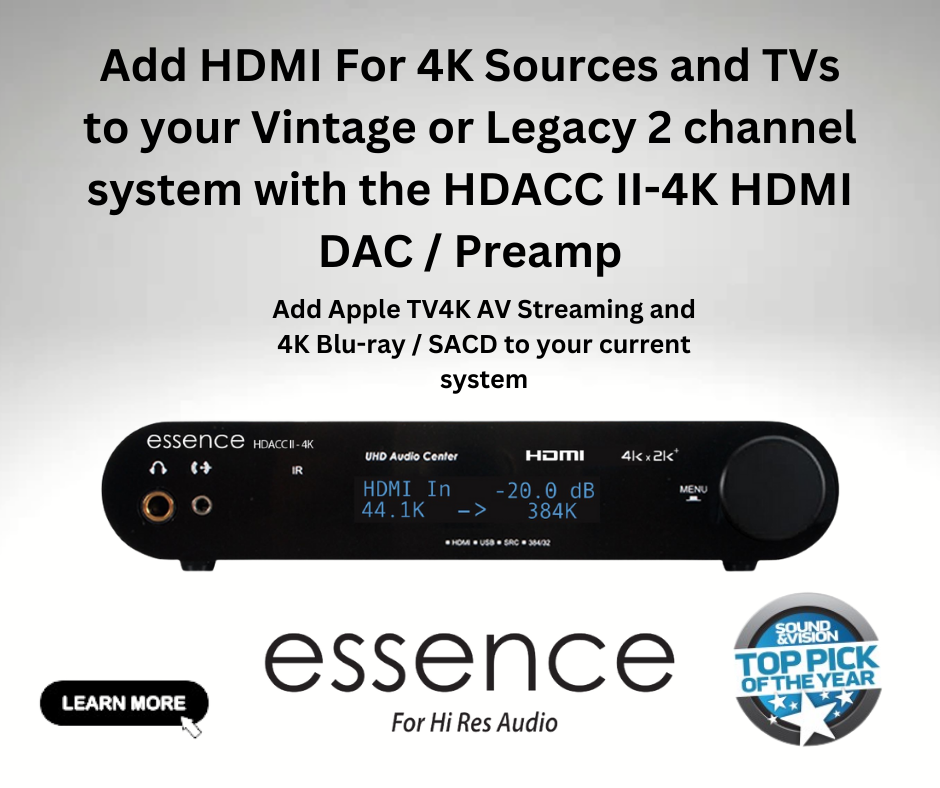Bob Rapoport
Music Reviewer
Thread Starter
- Joined
- Jan 29, 2018
- Posts
- 103
More
- Preamp, Processor or Receiver
- Essence HDACC II-4K
- Main Amp
- Essence DPA-440
- Universal / Blu-ray / CD Player
- Sony 4K
- Front Speakers
- Essence Electrostats
- Center Channel Speaker
- Essence
- Surround Speakers
- Essence
- Subwoofers
- Essence
- Screen
- Screen Goo painted screen, 4 coats
- Video Display Device
- Vizio M70
- Remote Control
- Essence
In recent years, television manufacturers have promoted HDMI ARC (Audio Return Channel) as a convenient way to connect TVs to external audio systems. For the average consumer using a soundbar, it does the job: a single HDMI cable carries the video source to the TV while the audio is “returned” to your audio system.. But for serious music lovers and home theater enthusiasts, HDMI ARC is not an audiophile method of adopting HDMI sources. Here’s why.


1. Making the TV the System Hub — A Fundamental Mis-step
ARC flips the traditional audio chain on its head by making the TV the main hub of the system. That means your carefully chosen source devices — Blu-ray players, Apple TV, Roku, game consoles — all feed the TV first. From there, the TV’s built-in circuitry controls the audio signal that is returned to your audio system from the HDMI ARC output. Unfortunately, TVs are not designed to handle audio at high fidelity standards. Their primary job is video, and when it comes to audio, their design is optimized for convenience and soundbars, not true high-end reproduction.2. Reliance on TV Apps and Volume Control
ARC ties you into the TV’s internal apps for streaming (Netflix, Prime Video, Disney+, etc.) and its volume control system. Neither of these was engineered to satisfy audiophile expectations. The apps are often compressed, inconsistent, and updated for speed rather than sound quality. The TV’s internal volume control, meanwhile, was designed for built-in speakers or a midrange soundbar — never for a precision preamp stage. You’re essentially asking a TV to do what an audiophile DAC or preamp does with infinitely more care.3. Lip Sync Problems
Another overlooked drawback is lip sync error. With ARC, the video signal has already been processed and displayed by the TV before the audio is sent back upstream to your audio system. That delay creates the classic problem of sound trailing behind the picture — breaking immersion and undermining the precision that serious listeners demand. Audiophiles spend decades chasing millisecond-level timing perfection; ARC undermines it at the most basic level.4. The Proper Audiophile Chain
The traditional audiophile way is to put the source devices upstream — routing them directly into an AVR (audio/video receiver) or into a high-performance DAC/preamp. This ensures the highest fidelity audio extraction before any video processing occurs, maintaining perfect sync and uncompromised sound. The Essence HDACC II-4K was designed precisely for this purpose. With HDMI inputs and outputs, it preserves the integrity of the original digital content, converts it to the purest possible analog, and passes video through to the display untouched. It aligns with the audiophile tradition — source first, preamp second, speakers last.Conclusion
HDMI ARC may be fine for casual viewers and soundbar users, but it’s no substitute for a true audiophile system design. By making the TV the audio hub, it introduces compromises in fidelity (it's bandwidth restricted to below Hi Res Audio standards), sync, and control that no serious listener should accept. For those who demand the best from their HDMI sources, products like the Essence HDACC II-4K — and traditional AVRs — keep the audio chain intact, the way high-end playback was meant to be.
Last edited:












